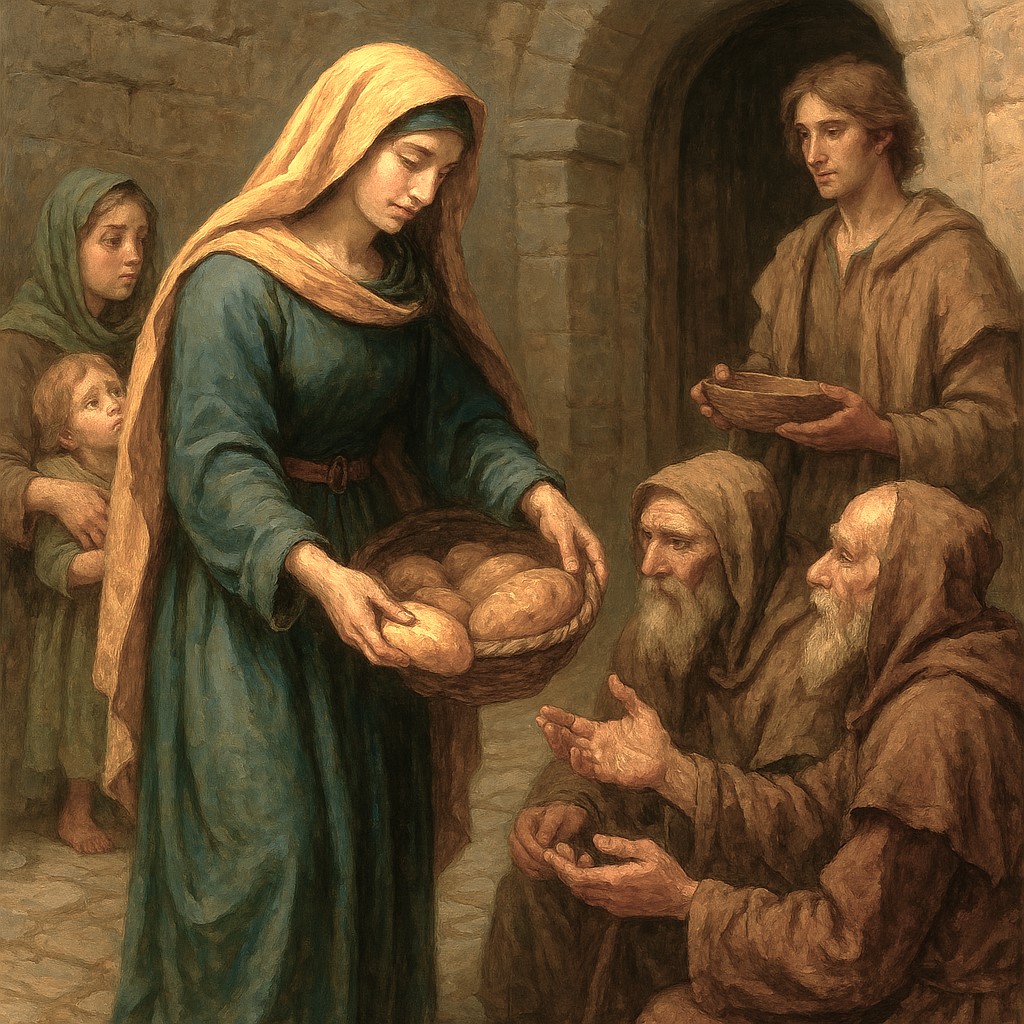Feeding the Poor
Feeding the poor is an action that characters may undertake to foster goodwill within a community, helping to maintain peace and order while cultivating a reserve of unskilled local labour.
The total number of potential poor that may benefit from this action is calculated as a percentage of a 6-mile hex’s total population, based on the region’s infrastructure designation. This draws from a broader pool than a cleric's congregation and reflects the wider population of the area.
| Hex Type | % of Population |
|---|---|
| 7 | 1% |
| 6 | 2% |
| 5 | 3% |
| 4 | 4% |
| 3 | 6% |
| 2 | 9% |
| 1 | 14% |
For example, if a type-3 hex with 4,000 inhabitants would have some 240 starving persons, while a type-2 with the same population would have 360. These are naturally approximate numbers. To support them enough to make a difference, enough food would need to be supplied to each person sufficient to meet half their bare monthly needs — approximately 30 lbs. of staple goods per person. Since food is distributed by family rather than individual, and each family is assumed to include 6.25 mouths on average, a total of 195 lbs. of food per family must be provided each month. The food supplied may be the cheapest available, provided it includes the following: 6 lbs. of meat, 9 lbs. of fruit, 14 lbs. of vegetables, 46 lbs. of grain or tubers, and 24 fl. oz. (counted as 3 lbs.) of beer, wine or spirits.
For each family fed in this manner, within a month the benefactor may call upon 2 labourers, each ready to provide up to 30 days of labour gratis, without payment. There is a 40% chance that each family supported for a month will find the means to feed themselves afterwards; the benefactor may continue to provide food for the remainder, and may wish to pay the labourers despite their willingness to work free, simply to ensure that they're able to support their family.
Benefactors may choose to feed the poor irregularly; they are under no obligation to maintain the effort. In a given hex, poverty and starvation left unchecked will increase at a rate of ½% each month, until the equilibrium that usually exists reasserts itself.
See The Adventure
